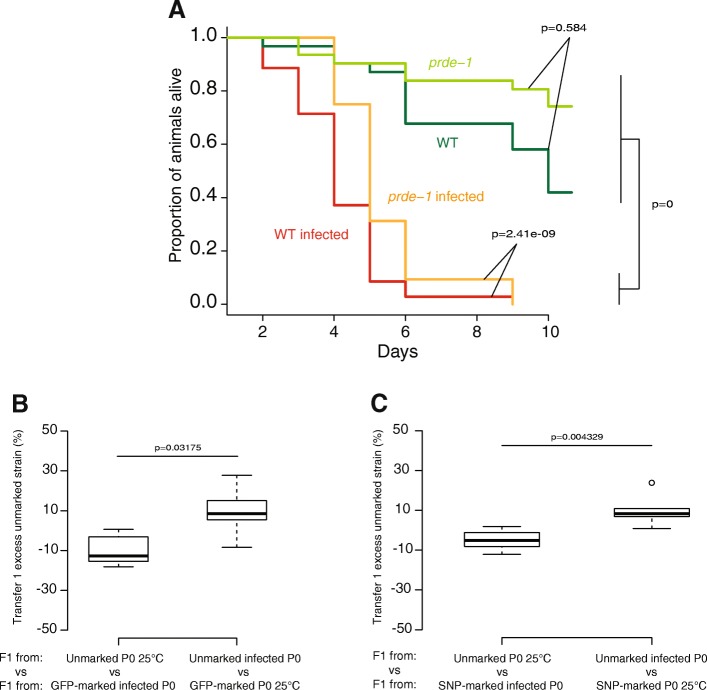Fig. 5.
Bacterial infection improves fitness in subsequent generations. a Survival of the wild-type strain (WT) and the prde-1 mutant at 25 °C on regular food (dark green and light green) and on the pathogenic bacteria Serratia marcescens (red and orange). A Mantel-Haenszel Logrank test has been used to assess the significativity between the different treatments. Raw data are available in Additional file 9: Table S4. b Intergenerational competition at 20 °C between animals derived from (left) unmarked P0 animals grown on E. coli at 25 °C and GFP-marked animals grown on S. marcescens at 25 °C; (right) GFP-marked P0 animals grown on E. coli at 25 °C and unmarked animals grown on S. marcescens at 25 °C. c Intergenerational competition at 20 °C between animals derived from (left) unmarked P0 animals grown on E. coli at 25 °C and SNP-marked P0 animals grown on S. marcescens at 25 °C; (right) SNP-marked P0 animals grown on E. coli at 25 °C and unmarked P0 animals grown on S. marcescens at 25 °C. Y-axes for b and c show the percentage of unmarked animals after 2–3 generations (1 transfer, all biological replicates), corrected for the effect of the SNP or GFP marker as in Fig. 3. Raw data are available in Additional file 5: Table S2

